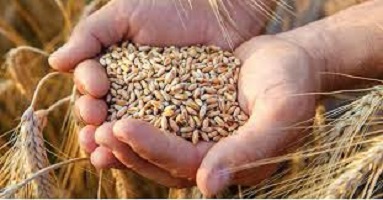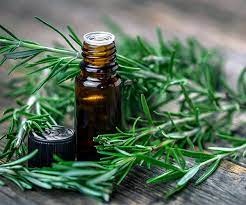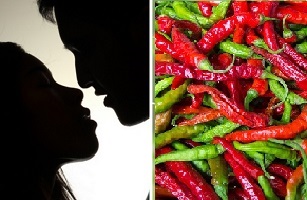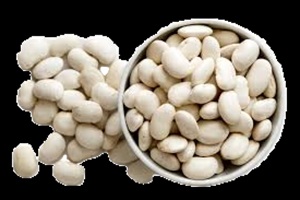Wheat Benefits and Side Effects
Wheat Benefits and Side Effects

Wheat consumption has become increasingly controversial in recent years. Wheat allergies, celiac disease, and other conditions have all been linked to it.
However, you may have heard that wheat has numerous nutritional values and health advantages.
Wheat food is one of the most widely consumed cereal grains on the planet. It comes from a type of grass (Triticum) that is grown in a variety of forms all over the world.
The primary species is bread wheat, also known as common wheat. Durum, spelt, emmer, einkorn, and Khorasan wheat are all closely related species.
Related Articles on Wheat benefits
- Super Wheat Health Benefits, Nutrition Facts, and Side Effects
- Wheat Meal Swallow: Nigerian Wheat Flour Meal Fufu Recipe
- Whole Wheat Pasta (Spaghetti) Recipe for Weight Loss
In baked goods like bread, white and whole-wheat flour are essential. Pasta, noodles, semolina, bulgur, and couscous are all wheat-based foods.
Wheat is divisive because it contains gluten, a protein that can cause an immune response in people who are predisposed to it.
Whole-grain wheat, on the other hand, can be a good source of antioxidants, vitamins, minerals, and fiber for those who can tolerate it.
About Wheat Benefits – An Overview
Everything you need to know about wheat is in this article.
Wheat food is primarily made up of carbohydrates, but it also contains some protein.
So, is wheat actually beneficial to your health?
What is wheat?
Wheat comes in two varieties. Bread wheat, also known as Triticum aestivum Vulgare, is the most common type.
The other type is durum wheat or Triticum turgidum durum. Durum wheat is used to make the majority of pasta.
Wheat flour is used in a variety of dishes. Pasta, noodles, bread, couscous, and baked goods like cakes and biscuits are examples.
When Wheat Becomes an Issue – Side Effects
Gluten, which is found in wheat, can be problematic. Gluten is a protein that some people react to negatively.
However, most people can consume gluten without difficulty.
Wheat is linked to the following conditions:
Celiac disease
This is a type of autoimmune disease.
When you eat gluten, your body triggers an immune response in your small intestine if you have celiac disease.
The lining of your small intestine is eventually damaged, causing it to absorb fewer nutrients.
Wheat allergy
This is a wheat and wheat-related allergy. It affects children more frequently than adults.
Gluten sensitivity in non-celiacs
More people are reporting symptoms after eating wheat recently. Headaches, fatigue, and muscle pains are not caused by allergies or autoimmune diseases.
Wheat Nutrition: Nutritional Value of Wheat
Complex carbohydrates, dietary fiber, and a moderate amount of protein can all be found in unrefined wheat.
Sprouting wheat is high in catalytic elements, mineral salts, calcium, magnesium, potassium, sulfur, chlorine, arsenic, silicon, manganese, zinc, iodine, copper, vitamin B, and vitamin E, according to the USDA National Nutrient Database. It’s high in antioxidants, particularly carotenoids like beta-carotene.
Wheat germ, or the kernel’s heart, is particularly high in vitamin E.
It is the world’s primary source of the vitamin B complex, which includes vitamins like thiamin, folic acid, and vitamin B6, as well as minerals like manganese, magnesium, and zinc. Wheat germ oil boosts strength and extends life.
Lignans, ferulic acid, phytic acid, alkylresorcinols, lutein, flavonoids, and saponins are phytochemicals and antioxidants found in wheat bran, the outer layer of the kernel.
- 15 grams of protein
- 6 grams of dietary fiber
- 2 grams of carbohydrates
- 38 milligrams of calcium
- 136 milligrams of magnesium
- 352 milligrams of phosphorus
- 376 milligrams of potassium
- 39 micrograms of folate
- 5 milligrams of niacin
Why Are Whole Grains So Beneficial? Wheat Benefits
You’ve probably heard that eating whole grains is healthier. What exactly are whole grains, though?
Wheat kernels are divided into three parts:
- Bran is the outer layer;
- Germ is the kernel’s core;
- The endosperm is the starchy middle layer.
To make white flour, the bran and germ are removed from the wheat kernel, leaving only the endosperm. Fiber, B vitamins, antioxidants, phytochemicals, and minerals like iron, copper, zinc, and magnesium are abundant in the layers that are removed.
Protein, carbohydrates, and a small number of B vitamins and minerals make up the endosperm.
In a 2,000-calorie-a-day diet, the 2015 to 2020 Dietary Guidelines for Americans recommend 6 ounces of grains. At least half of it should come from 100% whole grains.
Wheat Health Advantages ~ Wheat Benefits
Wheat is high in carbohydrates as well as vitamins and minerals. Whole wheat, in particular, has numerous health benefits.
Carbohydrate-dense ~ Wheat Benefits
Carbohydrates are crucial for good health but are required for proper body function.
Carbs should account for 45 percent to 65 percent of total daily calories, according to the American Dietary Guidelines.
Carbohydrates serve several purposes in your diet.
- They supply energy: Starches and sugars are broken down into glucose by your body (blood sugar). It gets its energy from glucose.
- Assist in weight management: The fiber found in many carbohydrates makes you feel full.
- Lower your risk of cardiovascular disease: Whole grains can help reduce your risk of cardiovascular disease. Fiber is also necessary for digestion.
Protein is present ~ Wheat Benefits
Protein is found in every cell of your body. Amino acids are the building blocks of protein. The majority of amino acids are produced by your body, but nine must be obtained from food.
Protein should account for 10% to 35% of total calories, according to experts. Plants such as legumes, nuts, seeds, and whole grains are good sources of protein.
Wheat types have different protein content. Durum wheat, which is used for pasta, has a higher protein content. Protein can account for 8.5 percent to 15% of the dry weight of wheat.
Minerals are abundant ~ Wheat Benefits
Wheat is high in minerals. The type, soil, climate, and agricultural practices, such as organic farming, all influence the mineral content of wheat.
White flour is deficient in minerals and vitamins, whereas whole wheat flour is.
- Minerals are necessary for:
- regulating enzyme systems
- building bones and teeth
- assisting muscle contractions
- releasing energy from food
- maintaining the pH balance of your body
According to research, eating certain types of whole-grain flour can provide you with more than 70% of your daily recommended mineral intake:
- Selenium
- Iron
- Magnesium
- Manganese
- Zinc
- Copper
- Phosphorus
Antioxidants ~ Wheat Benefits
Antioxidants are found in whole grains. These are substances that can help to delay or prevent cell damage.
Consuming antioxidant-rich foods is the best way to obtain them.
Antioxidant supplements, according to researchers, are ineffective in preventing disease.
Antioxidants found in whole grain flours include:
- Phenolic acids
- Ferulic acid
- Cryptoxanthin
- Flavonoids
- Lutein
- Zeaxanthin
Lutein and zeaxanthin are carotenoids, pigments that give wheat its color. They are said to be beneficial to eye health, particularly in terms of reducing the risk of cataracts and age-related macular degeneration.
These antioxidants are mostly found in the wheat kernel’s germ layer. As a result, they’re found in whole-wheat flour but not white flour.
Fiber-dense ~ Wheat Benefits
Fiber is abundant in whole grains. A daily fiber intake of 25 to 38 grams is recommended. Dietary fiber can help you:
- Maintain a healthy blood sugar level
- Lower your cholesterol levels
- Reduce your risk of colorectal cancer
- Improve your bowel movements
- You’ll be satisfied with fewer calories because you’ll feel full for longer.
Wheat benefits for weight loss
People who ate whole grains, such as whole wheat bread, lost more belly fat than those who ate only refined grains, such as white bread and white rice, according to one study.
Refined grains have fewer vitamins, minerals, and fiber than whole grains. However, eating too much whole wheat bread can lead to weight gain.
Breast cancer prevention ~ Wheat Benefits
Wheat bran is an anticarcinogenic agent in women, which means it prevents certain types of cancer by counteracting the effects of carcinogens.
Breast cancer develops when estrogen levels rise to an abnormally high level. Wheat bran keeps estrogen levels under control at all times, reducing the risk of breast cancer.
This is particularly effective in premenopausal women, who are more likely to develop this type of cancer.
Furthermore, wheat contains lignans. Lignans bind to hormone receptors in the body, helping to keep high circulating estrogen levels in check and thus preventing breast cancer.
Wheat’s additional health benefits are listed below.
- Enhances the body’s metabolism
- Type 2 diabetes is prevented.
- Chronic Inflammation is Reduced
- Gallstone prevention
- Promotes Women’s Gastrointestinal Health
- Asthma Prevention in Children
- Prevents coronary artery disease
- Relieve symptoms of menopause
- Heart attacks are avoided.
- Gut Health May Improve
- Enhances Eye Health
Wheat Health Benefits for Babies
Wheat is high in Carbohydrates
It is high in carbohydrates, which are used to generate the energy we require for our daily activities.
Your child will require energy in order to perform any physical or mental activity. Include this healthy energy source in your child’s diet.
Wheat Aids Digestion ~ Wheat Benefits for Babies
Wheat is easily digestible and maintains the health of the intestines.
It also helps to prevent flatulence in babies. Wheat is high in fiber, which helps babies with constipation.
Aids in baby digestion and prevents constipation. It facilitates bowel movement in infants.
Wheat is a good source of vitamins and minerals ~ Wheat Benefits for Babies
It contains vitamins and minerals that aid in mental and physical development.
Wheat contains chlorophyll, which aids in blood purification. It is also high in vitamin B and other minerals that are important for infants.
Wheat Aids Oral Health ~ Wheat Benefits for Babies
It aids oral health indirectly by requiring extensive chewing of wheat-based foods. It also helps to prevent cavities and improves gum blood circulation.
When Should You Give Your Baby Wheat?
Wheat is one of the baby’s first solid foods because it is high in vitamins and minerals.
Wheat can be given to a baby as early as six months of age. If your baby is allergic to wheat, you should wait 1- 2 years before feeding him any wheat-based recipe.
If he agrees, you can begin at any time after six months. Before introducing wheat to your baby’s diet, speak with your doctor first.
When introducing wheat to babies, keep the following in mind:
Simple Wheat Recipes to Try:
Wheat recipes for babies should be avoided because it can cause allergies in some children.
Processed wheat is preferable to whole wheat for your baby because whole wheat may be too heavy for him.
Make your baby a simple Wheat Porridge Recipe that he can easily digest.
Wheat Flour Should Be Avoided:
Wheat flour should not be used to make wheat recipes because it can cause wheat allergies.
If your baby is showing signs of asthma:
If your baby is exhibiting signs or symptoms of respiratory problems or asthma, it is best to delay or avoid giving wheat to him.
Recipe for Wheat Porridge for Baby
If your baby enjoys wheat-based porridge, it’s a simple recipe to make. You can add other ingredients or milk to make it more appealing to your baby.
What You’ll Require ~ Ingredients
- Wheat flour
- Moong dal
- Almonds
- Jaggery
- Cow milk
- Water
How to Prepare
- Firstly, preheat a pan over low heat and roast the almonds and moong dal separately for a few minutes, until their colors change.
- Secondly, mix them together to make a smooth powder.
- After that, roast the flour in the pan until the aroma comes out.
- Then, remove the pan from the heat and stir in the powder. Your wheat flour mixture is complete.
- Combine jaggery and water in a vessel and heat until the jaggery melts. Then, filter the water and combine it with the wheat flour. If necessary, add more water and thoroughly combine everything to avoid lumps.
- Cook over medium heat, stirring constantly, and add milk if desired.
- Finally, when it thickens, remove it from the heat and set it aside to cool.
Wheat consumption during pregnancy
Is it safe to consume wheat during pregnancy? YES.
Grains (for example, whole wheat, oats, corn, and rice) are high in iron, selenium, and magnesium, according to BabyCenter.
They’re also high in B vitamins (including B1, B2, folic acid, and niacin), which your growing baby requires for nearly every part of his body.
Grains provide energy for your baby’s development and aid in the growth of the placenta.
It’s better to eat “whole grains” like whole wheat bread and brown rice while pregnant.
Whole Wheat Has Many Health Benefits for Your Skin ~ Wheat Benefits for Skin
Whole wheat is high in zinc, vitamin E, and selenium, all of which help fight acne, nourish the skin, prevent skin cancer and protect against sun damage.
Furthermore, its high fiber content helps to maintain a healthy digestive system by removing toxins from our bodies and keeping our skin looking young and smooth.
It is necessary to consider some of the skin benefits of whole wheat. Whole wheat has numerous benefits for the skin, including keeping it healthy, glowing, and youthful.
Whole Wheat Improves Skin Quality ~ Wheat Benefits for Skin
One of the most well-known benefits of whole wheat for healthy skin and hair is that it promotes beauty.
Beautiful skin not only enhances your appearance but also boosts your self-esteem.
Most people nowadays are constantly looking for and using various expensive products to make their skin look beautiful.
However, if you incorporate whole wheat foods into your daily diet, you won’t have to work as hard.
Because it is high in zinc and vitamin E, it makes your skin look radiant and healthy.
Whole wheat enables Sun Protection ~ Wheat Benefits for Skin
Whole wheat is effective in protecting the skin from harmful sun rays because it contains antioxidants.
This healthy grain also shields your skin from other harmful environmental factors.
Skin is nourished by whole wheat ~ Wheat Benefits for Skin
Whole wheat is good for your skin because it contains selenium.
One of the most important benefits of whole wheat for healthy skin is that it provides deep nourishment to your skin from the roots, resulting in a healthy and smooth appearance.
Acne is treated with whole wheat ~ Wheat Benefits for Skin
Whole wheat is a nutrient-dense grain with high fiber content.
Whole wheat’s fiber content removes harmful toxins from your body and keeps it clean, which is an important skin health benefit.
It promotes acne-free and healthy skin in this way.
Whole Wheat Has Anti-Aging Properties ~ Wheat Benefits for Skin
Wheat is fantastic for your skin.
Whole wheat has antiaging properties, which is one of the most desired benefits for keeping your skin healthy.
With the help of its selenium content, it improves the elasticity of your skin and makes it younger and more radiant.
Skin Cancer Prevention with Whole Wheat ~ Wheat Benefits for Skin
Skin cancer is becoming more prevalent, and many people are looking for anti-inflammatory and cancer-fighting foods.
One of the eight benefits of whole wheat for healthy skin and hair is that it can protect you from cancer.
Because whole wheat and other whole grains are high in selenium, including them in your daily diet will help you treat this problem to a large extent.
Whole Wheat Has Many Health Benefits for Your Hair ~ Wheat Benefits for Hair
Furthermore, wheat contains zinc, which promotes healthy hair and protects it from environmental damage.
It is necessary to consider some of the s hair benefits of whole wheat. Whole wheat has many benefits for hair, including keeping it healthy and shiny.
Because whole wheat is a good source of vitamins and minerals, including it in your diet can help your hair.
Whole Wheat Protects Your Hair
Whole wheat is beneficial for protecting the hair from environmental damage, sun damage, and other health-related damages because it contains vitamin E, selenium, and zinc.
One of the most important health benefits of whole wheat is that it helps to keep your skin and hair healthy by preventing damage and strengthening your hair.
Whole wheat makes hair shiny.
Having dry, rough hair can be embarrassing at times. Consume whole wheat on a daily basis to avoid this awkward situation.
Whole wheat not only makes your food more delicious and nutritious, but it also contains zinc, which helps you achieve healthy hair.
You can use whole wheat grain in your recipes now that you understand its importance.
Hair becomes lustrous
Zinc is found in whole wheat. This mineral has many benefits, including the ability to give you healthy, lustrous hair.
Wheat’s Uses
Wheat is used to making a wide range of foods that are consumed in a typical person’s daily life, making it very simple to include it in your diet.
Including bread in your meals, preferably whole wheat bread, is one of the simplest ways to obtain the wheat.
It can be used to make delectable sandwiches and subs. Breakfast with wheat flakes is another way to include it in your diet.
To increase the nutritional value and taste of the bowl, add a bunch of tasty fruits. Wheat is used to making animal feed. Beer is also made from wheat.
- Bread, muffins, and wheat flakes for breakfast
- Sprouted wheat berries: These can be used in salads with vegetables and grains.
- Wheat germ: For a nutrient boost, add it to bread, pastries, cakes, or yogurt.
- Pizza and pasta
- Wraps and Rotisserie
Wheat Crop Production – Wheat’s Cultivation
Whole wheat is a grain that originated in South West Asia and is now grown all over the world. Wheat is cultivated at high altitudes.
Types of Wheat
There are two ways to consume the grain:
Whole wheat
Buying 100 percent whole wheat products ensures that you get all of the nutrients from the bran, germ, and endosperm.
Processed Wheat
After 60 percent of the grain has been extracted, bleached white flour is produced by processing.
The bran and germ of the wheat grain are usually found in the 40 percent of the wheat grain that is removed – the outer brown layer.
More than half of the vitamins B1, B2, B3, and E, calcium, phosphorus, folic acid, copper, zinc, iron, and fiber are lost in the process of making 60 percent abstraction flour.
The following are examples of processed flour:
- All-purpose flour,
- Bread flour,
- Cake flour,
- Self-rising flour,
- Durum flour
More on Side Effects
Disadvantages of eating wheat
Wheat does seem to be difficult to digest.
Consuming too much of this carbohydrate food makes the intestines work harder and can sometimes lead to blockages or sluggish digestion.
This can cause digestive issues like bloating, gas, and water retention.
Wheat Allergies and Side Effects
Wheat should be avoided by people who are prone to allergic reactions because it can aggravate them.
The following are some of the negative consequences of excessive consumption
- Hives, itching, skin rash, and eczema are examples of allergic reactions.
- Gluten sensitivity and celiac disease
- Irritable bowel syndrome (IBS)
- It’s high in oxalates, which can lead to health issues such as gallstones, kidney stones, and gout.
- It contains phytic acid, which inhibits the absorption of minerals like iron and zinc.
- Because processed foods have a high glycemic index, diabetics should avoid them.
Questions Frequently Asked
What happens if we consume wheat on a regular basis?
Too much wheat in your diet can make your intestines work harder, resulting in sluggish digestion and digestive issues like water retention, bloating, and gas.
As a result, it’s critical to eat a well-balanced diet that includes wheat in moderation.
How much wheat should I consume on a daily basis?
Experts recommend that you consume 5 to 8 ounces of grains per day, with 3 to 6 ounces of whole grains.
One ounce of grains is roughly the same as one slice of bread or half a cup of cooked pasta or rice.
Is wheat a fattening food?
She claims, “There’s nothing wrong with wheat food.” “It’s not the wheat that makes you gain weight; it’s the calories you consume.”
Simply eat more fruits and vegetables as part of a balanced diet to reduce calories and lose weight while still eating wheat-containing foods on occasion.”
Does wheat make you hungry?
Two slices of whole wheat bread actually raise blood sugar levels higher than a candy bar.
After about two hours, your blood sugar drops, making you shaky, your brain foggy, and you hungry.
Do you fart when you eat wheat?
Grains, such as oats and wheat products, contain gas-producing fructans and farty fiber, so bread, pasta, and whole grains can cause wind.
Do you get bloated after eating wheat?
Gluten is a protein found in wheat that can cause bloating, gas, stomach pain, and diarrhea in some individuals.
The gluten is found in bread, pasta, and many baked goods. Gluten sensitivity can be caused by celiac disease, which affects about 1% of the population in the United States.


